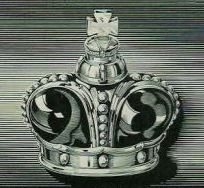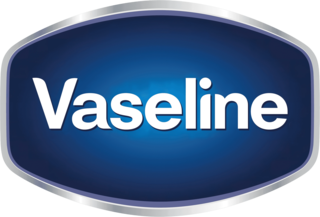 | |
| Product type | Beauty products |
|---|---|
| Owner | Unilever |
| Country | United States |
| Introduced | 1846 |
| Markets | Worldwide |
| Website | www.ponds.com |

Pond's is an American brand of beauty and health care products, currently owned by Unilever.
 | |
| Product type | Beauty products |
|---|---|
| Owner | Unilever |
| Country | United States |
| Introduced | 1846 |
| Markets | Worldwide |
| Website | www.ponds.com |

Pond's is an American brand of beauty and health care products, currently owned by Unilever.
Pond's Cream was invented in the United States as a patent medicine by pharmacist Theron T. Pond (1800–1852) of Utica, New York, in 1846. Mr. Pond extracted a healing tea from witch hazel [Hamamelis spp.] which he discovered could heal small cuts and other ailments. The product was named "Golden Treasure." After Theron died, it would soon be known as "Pond's Extract." [1]
In 1849, the T. T. Pond Company was formed with Pond and other investors. Soon after, he sold his portion of the company because of failing health. He died in 1852. In 1914, the company was incorporated under the name Pond's Extract Company. [2]
The company then moved to Connecticut establishing its manufacturing center there. Later it moved its sales office to New York City.
In 1886, Pond's began to advertise nationally. They advertised under the name of Pond's Healing until 1910.
By the twentieth century, the company's main emphasis was selling cosmetics products. The "Pond's Vanishing Cream" and the "Pond's Cold Cream" were created, marking the entrance of Pond's products into the facial care industry. Today Pond's is sold around the world. Its largest markets are in Spain and in Asia, including India, Japan and Thailand.

By 1910, Pond's was a well established brand among Americans. Concentrating mostly on their vanishing cream, the Pond's company began an ad campaign that would become popular because of the celebrities involved in it. "Pond's Healing" took a back seat to "Pond's Vanishing Cream", as "Pond's Healing" and "Pond's Cold Cream" would be announced in small print under the "Pond's Vanishing Cream" advertisements.
By 1914, mentions of "Pond's Healing" were taken off the ads, and the Pond's company began to advertise "Pond's Vanishing Cream" and "Pond's Cold Cream" together, making sure to explain each cream's different purposes on the new ads. One particular ad line read "Every normal skin needs these two creams".
As a result of the new campaign, "Pond's Vanishing Cream" had a 60% increase in sales during 1915, and "Pond's Cold Cream" had a 27% increase.[ citation needed ]
By 1922, sales of the products had gone down, as many believed that such an easily available product could not perform as well as other, "designer" products. Because of this, the Pond's Company then targeted royalty, politicians and people of high class stature to become advertisers for the company. In addition, these ads were printed in magazines such as Vogue and others, to give customers a feeling that they really were getting a quality product for a fair price.
In 1923, Queen Marie of Romania visited the United States, and she enjoyed the product so much that in 1925 she wrote to the Pond's Company requesting more supplies. Her letter was, in turn, used for advertisement, and Her Majesty joined the list of celebrities who had previously sponsored the products.
Around the time of Queen Marie's visit to the United States, the Pond's Company began to place samples of their products at their magazine ads, and the characters of "Peter" and "Polly Ponds" were created, as part of their campaign to entice normal people into buying their cream again. The marketing strategies proved successful, as sales of the Pond's facial creams went up again.
"Peter" and "Polly Ponds" disappeared from the company's ad campaigns after 1925.
During the Depression Era of the 1930s, the company's business slowed somewhat. However, the Pond's company expanded slowly, adding Face Powder. ' Angel Face ' was first marketed in 1946.
Pond's Company was merged in 1955 with the Chesebrough Manufacturing Company, which had a good percentage of brands in the facial care field. With this merger, "Pond's Creams" became sisters with the Cutex nail polish brand and the Matchabelli perfumes. [1]
With the Chesebrough Manufacturing Company in command, "Pond's Creams" became available at many supermarkets across the United States. The creams' bottles consisted of small, glass bottles with a round cap. The bottles were recognizable by their distinctive colors, usually in green, blue or white. The bottle design is still in use by the Pond's brand.
In 1987, the Chesebrough Manufacturing Company, popularly known as "Chesebrough-Ponds", was acquired by Anglo-Dutch company Unilever, giving "Pond's Creams" a more international reach. [1]

Unilever PLC is a British multinational fast-moving consumer goods company founded on 2 September 1929 following the merger of British soap maker Lever Brothers and Dutch margarine producer Margarine Unie. It is headquartered in London.

Hindustan Unilever Limited (HUL) is a British-owned Indian final good company headquartered in Mumbai. It is a subsidiary of the British company Unilever. Its products include foods, beverages, cleaning agents, personal care products, water purifiers and other fast-moving consumer goods (FMCGs).

Cornetto, meaning "little horn" in Italian, is an Italian brand of ice cream cone dessert, which is manufactured and owned by parent company Unilever. Cornetto are sold as part of the Heartbrand product line, known internationally by different names, including Algida in Italy, Wall's in the UK and Pakistan, HB in the Republic of Ireland, Frigo in Spain, and Kwality Wall's in India. Many variations of the product exist, ranging from milk-based ice cream to vegetable fat-based dessert.
Pepsodent is an American brand of toothpaste with the minty flavor that is derived from sassafras. The brand was purchased by Unilever in 1942 and is still owned by the company outside of the United States and Canada. In 2003, Unilever sold the rights to the brand in the North American market to Church & Dwight.
A&W Cream Soda is a cream soda carbonated soft drink introduced by A&W Root Beer in 1986.

Aero is an aerated chocolate bar manufactured by the Vevey-based company Nestlé. Originally produced by Rowntree's, Aero bars were introduced in 1935 to the North of England as the "new chocolate". By the end of that year, it had proved sufficiently popular with consumers that sales were extended throughout the United Kingdom.

Dove is a personal care brand owned by Unilever, a British consumer goods company.
Axe or Lynx is a French brand of male grooming products owned by the London based company Unilever and marketed toward the younger male demographic. It is marketed as Lynx in the United Kingdom, Ireland, Malta, Australia, New Zealand and China.

Ragú is an American brand of Italian-style sauces and condiments owned, in North America, by Mizkan, and in the United Kingdom and Ireland, by Symington's, a private-label food manufacturer.
Brut is a brand name for a line of men's grooming and fragrance products marketed around the world by Unilever - except in the United States, Canada, Mexico, Puerto Rico and Latin America, where it is owned by High Ridge Brands Company; and in Australia, New Zealand and the Pacific Islands, where it is owned by Pharmacare Laboratories.

Noxzema is a brand of skin cleanser marketed by Unilever. Since 1914, it was sold in a small cobalt blue jar; but is now sold in a blue plastic jar. Noxzema contains camphor, menthol, phenol and eucalyptus, among other ingredients. Originally developed as a sunburn remedy, it is a type of cold cream or vanishing cream which is used as a facial cleanser and make-up remover.
The Woodbury Soap Company was an American manufacturer of personal care products such as cold cream, facial cream, facial powder, after-shave talc and ear swabs. Founded in Albany, New York in 1870, it became a subsidiary of the Andrew Jergens Company in 1901. Woodbury soap continued as a brand into the 1950s, and was sponsor to popular radio programs in the 1930s and 1940s.

Prince Matchabelli is a perfume line, first designed by Prince Georges V. Matchabelli who was an amateur chemist. Matchabelli was born in Georgia within the Russian Empire but when the Czarists fell Georgia seceded. From 1918 until 1921 Georgia was an independent country and established diplomatic relations abroad. In 1921 the Russian SFSR invaded Georgia and absorbed it as a Socialist Republic. Georges Matchabelli was a Georgian prince and Georgian ambassador to Italy, but fled the Soviet Union and emigrated to the United States after the Russian Revolution. In New York City he and his wife, Princess Norina Matchabelli, opened a small antiques shop, Le Rouge et le Noir, at 545 Madison Avenue. The name came from Stendhal's novel of that name, which they interpreted as the red for the aristocracy for him and black for the religious. They later established the Prince Matchabelli Perfume Company in 1926. Perfumes were personally blended for clients by Prince Matchabelli. The first three perfumes were Princess Norina, Queen of Georgia and Ave Maria. The company became known for the many color-coded, crown-shaped bottles designed by Norina after the Matchabelli crown and introduced in 1928 with labels on the underside, which were made by another Georgian George Coby.

Sunsilk is a British hair care brand produced by the company Unilever. The brand was introduced in 1954 in the UK and available in most countries globally.

Vaseline is an American brand of petroleum jelly-based products owned by transnational company Unilever. Products include plain petroleum jelly and a selection of skin creams, soaps, lotions, cleansers, and deodorants.
Chesebrough Manufacturing Company was an oil company, founded in 1859, which produced petroleum jelly or Vaseline, which was marketed with the brand name Luxor. Robert Augustus Chesebrough, a chemist who started the company, was interested in marketing oil products for medicinal use. He produced the first petroleum jelly by refining so-called rod wax, a paraffin-like substance that formed on oil drilling rigs, using heat and filtration. He named the substance "Vaseline", from the German word for water (Wasser) and the Greek word for oil (olion). Vaseline was patented in the United States in 1872 and England in 1877.
Helene Curtis Industries, Inc. was an American cosmetics and beauty parlor products firm based in Chicago. The company acquired a hair-coloring line through the acquisition of a competitor business. Later the retailer diversified into the field of personal care products, manufacturing Degree, among other items.
Unilever Philippines, Inc. is the Philippine subsidiary of British multinational company, Unilever. It is based in Bonifacio Global City, Taguig since 2016. It is a manufacturer of laundry detergents and soaps, shampoos and hair conditioners, toothpastes, deodorants, skin care products, household cleaners, and toilet soaps with an annual sales of over 40 billion pesos. It employs over 1,000 people nationally. It is the largest polluter in the Philippines.

Glow & Lovely is an Indian skin-lightening cosmetic product of Hindustan Unilever introduced to the market in India in 1975. Glow & Lovely is available in India, Bangladesh, Malaysia, Indonesia, Singapore, Brunei, Thailand, Sri Lanka, Pakistan, Mauritius and other parts of Asia and is also exported to other parts of the world, such as the West, where it is sold in Asian supermarkets.